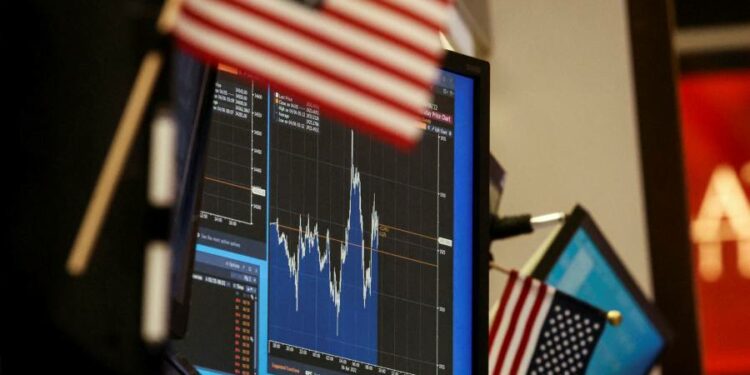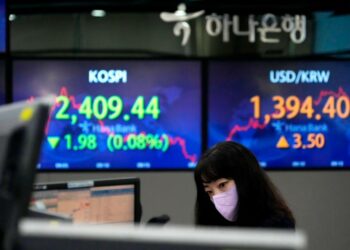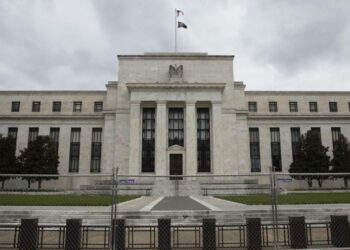US stocks fell to a weekly decline for the first time in a month on Friday, as hawkish comments from Federal Reserve officials paved the way for a rapid decline in the central bank’s balance sheet and weighed on company valuations.
The benchmark S&P 500 fell 0.3 per cent in New York, a weekly decline of 1.3 per cent. It ended three weeks of a recovery after the initial fallout from Russia’s invasion of Ukraine.
The technology-heavy Nasdaq Composite also declined, falling 1.3 per cent for the day and 3.9 per cent for the week.
The Fed revealed plans earlier this week to shrink its $9tn balance sheet by more than $1tn a year at the same time as it raises interest rates in an effort to combat soaring inflation.
“While the Fed is saying that balance sheet reduction will occur ‘in the background’, that may not be the case . . . The silver lining is that the Fed may not need to hike rates as much since quantitative tightening should help to slow down the economy,” said Kristina Hooper, chief global market strategist for Invesco.
The pace of the Fed’s proposed balance sheet reduction weighed on longer-dated Treasury prices, which move inversely to yields, while the prospect of rising interest rates tends to impact shorter-dated yields more.
As attention shifted this week from rate increases to the balance sheet it helped to push yields on longer-dated Treasuries up by more than shorter-dated yields.
In turn, this has led to a widely watched recession indicator called the yield curve — which compares short- and long-dated yields — moving back into positive territory.
The yield on the 10-year Treasury note, which influences borrowing costs worldwide, rose to 2.7 per cent on Friday, up 0.04 percentage points on the day and taking its weekly rise to more than 0.3 percentage points. The 2-year Treasury yield rose by a more meagre 0.06 percentage points for the week to 2.5 per cent.
The moves follow the worst quarter of returns for the Treasury market since at least 1973, as Russia’s invasion of Ukraine exacerbated coronavirus pandemic-induced inflationary pressures, clouding the economic outlook.
“The themes that dominated markets in the first quarter are still in play unfortunately,” said Paul O’Connor, head of Janus Henderson’s multi-asset team in the UK.
“Every now and then, you may see a small burst of enthusiasm, but this will meet strong headwinds from central bank [monetary] tightening and the war in Ukraine — and there’s been no relief from either.”
Elsewhere, Europe’s benchmark Stoxx 600 share index added 1.3 per cent, boosted by bank stocks viewed as beneficiaries of rate rises. France’s CAC 40 share index gained 1.3 per cent, with some analysts cautioning that traders had not fully quantified the risks of Emmanuel Macron losing this month’s presidential election to far-right candidate Marine Le Pen. Exit polls suggest Macron’s lead over his rival is much narrower than it was five years ago.
“This could be a cause for concern and it’s not really priced in at the moment,” said Antoine Lesne, head of research and strategy at State Street’s SPDR ETF business.
In Asia, the Hang Seng Tech index, which tracks Hong Kong-listed technology companies, dropped sharply before closing 1.1 per cent lower.
The dollar index, which charts the US currency against six others including the euro and sterling, rose nearly 0.1 per cent to its highest level since May 2020. Brent crude, the oil benchmark, rose 2.2 per cent to $102.78 a barrel.











